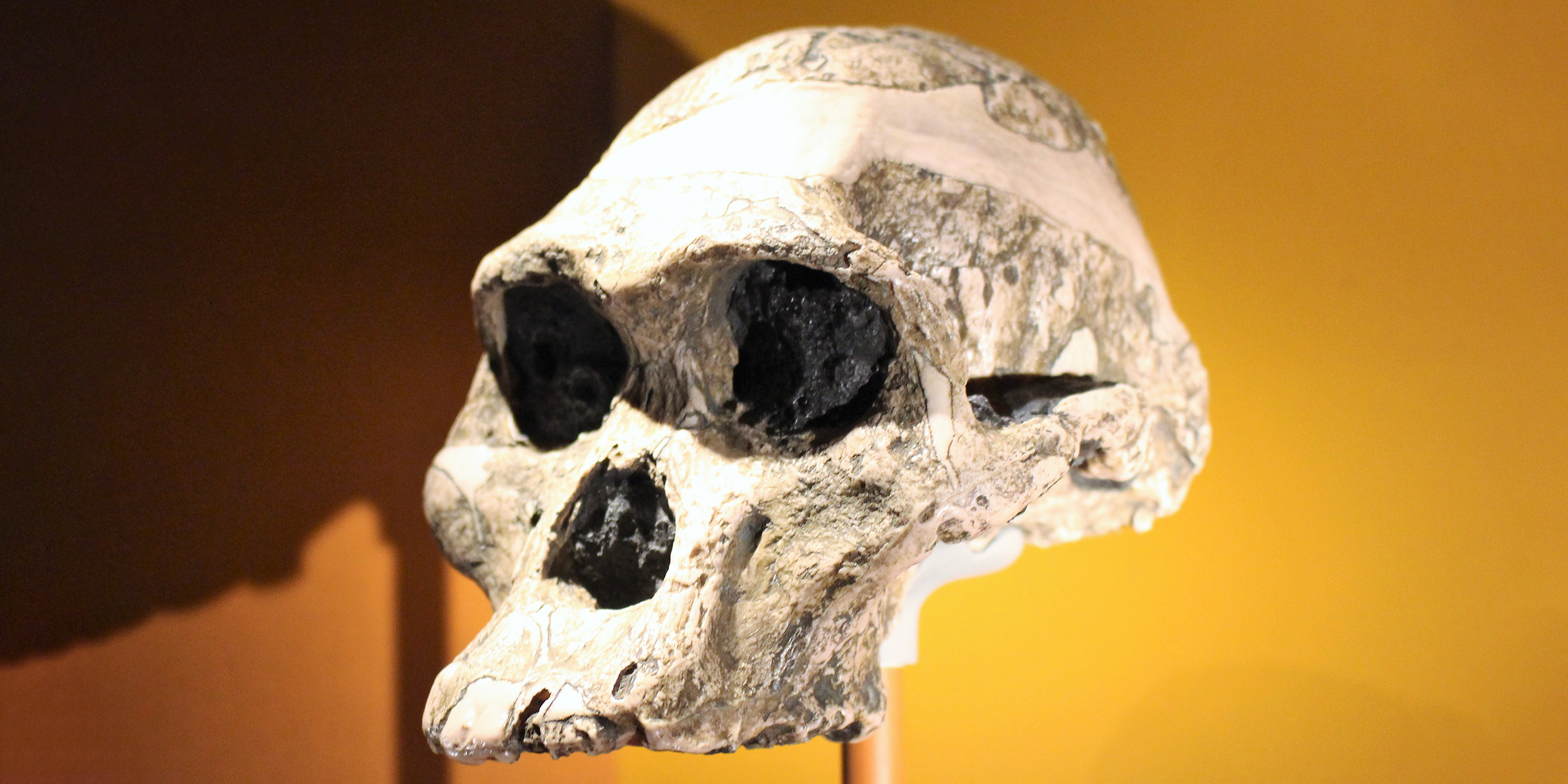Originally published 1 February 1999
Who am I? Where did I come from? Why am I here?
To ask these questions is to be human. As far as we know, we are the only species on Earth that asks them.
Ultimate answers are matters for intuition or religious faith. But the methods of science can take us a long way toward finding partial answers.
We have discovered, for example, that we are related to all life on Earth by common descent, that we share a biochemistry with all other creatures, and that our earliest humanoid ancestors appeared several million years ago in Africa and from there radiated across the planet.
We know about our earliest ancestors primarily through fossilized bones — a jaw, a skull fragment, a femur, a tooth. Only rarely do we find anything approaching a complete skeleton.
Nevertheless, the powerful methods of science enable us to extract knowledge from these bits of bone about how our ancestors lived, what they ate, how they obtained their food, how long they lived, how they died.
Building a picture of life in those far away times is a slow, painstaking task, involving the separate disciplines of many scientists. We will never know everything about the origin of our species, but each generation of researchers adds more details to the story.
In a [1999] issue of the journal Science, paleoanthropologist Julia Lee-Thorp of the University of Cape Town in South Africa and graduate student Matt Sponheimer of Rutgers University in New Jersey reported a remarkable deduction about the diet of Australopithecus africanus, a humanlike creature that may have been a direct ancestor of modern humans.
Members of this species lived in Africa about 3 million years ago. They walked erect, but were probably also at home in the trees. As far as we know, they did not make stone tools. They disappear from the fossil record about the time of the appearance of the first Homo, or true human, about 2.5 million years ago.
Previously, researchers thought that A. africanus ate forest leaves, nuts, and fruits. Lee-Thorp and Sponheimer conclude that they were more eclectic in their diet, including either grassland plants or the flesh of grazing animals.
Here’s how they figured it out.
Plants convert carbon dioxide from the atmosphere into sugar and tissue by the process known as photosynthesis. It happens that carbon has two stable forms, carbon-12 and carbon-13, called isotopes. Carbon-13 has an extra neutron in the atomic nucleus, and this additional mass has a slight influence on the chemistry of photosynthesis.
Trees, bushes, and shrubs discriminate against the heavier isotope of carbon when they take carbon from the air. Grasses and sedges incorporate carbon-13 into their tissue more readily.
Therefore, the relative numbers of carbon-12 and carbon-13 atoms differ in the tissue of these two categories of plants, and these differences can be measured with an instrument called a mass spectrometer that sorts atoms according to their weight.
We are what we eat. An animal that dines exclusively on leaves, seeds, or roots of grasses, or upon the flesh of grass-grazing animals, will have in its tissue a ratio of carbon isotopes similar to that of grassland plants. An animal that has an arboreal diet, or eats animals with a woodland diet, bear the isotopic signature of woodier plants.
Lee-Thorp and Sponheimer did a carbon isotope analysis of an assemblage of 3‑million-year-old bones from the Makapansgat Limeworks in South Africa. The bones included fragments from four A. africanus individuals, and 65 individual specimens from 19 other species of animals.
Most of the Makapansgat species fell into two categories: grassland grazers and woodland browsers. Two species showed mixed feeding habits. One carnivore, a scavenging hyena, appears to have dined mostly on grassland grazers.
And A. africanus, our possible ancestor? An isotopic ratio heavy on carbon-13.
Apparently, A. africanus ate grassland plants or the flesh of grazing animals.
But tooth wear patterns of A. africanus are not typical of animals that eat grasses and sedges. This leads Lee-Thorp and Sponheimer to tentatively suggest that A. africanus was at least an occasional carnivore. If so, these potential human ancestors was more resourceful and eclectic in their diet than anyone realized.
The adoption of a meat-rich diet by A. africanus may have contributed to an increase in brain power that led eventually to the curiosity, imagination, and intelligence of our own species.
What is extraordinary about this work is that a minuscule bit of enamel powder extracted from a 3‑million-year-old tooth can bear clues to diet, by implication to lifestyle and habitat, and ultimately to the story of human origins.
This is science at its best — curiosity, imagination, and intelligence in the service of the big questions: Who am I? Where did I come from? Why am I here?



